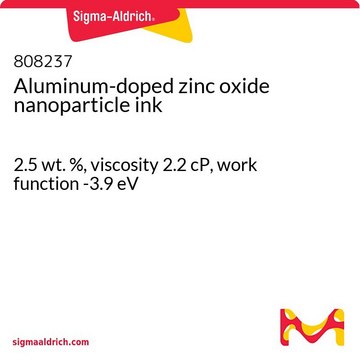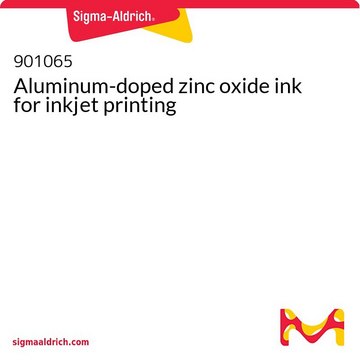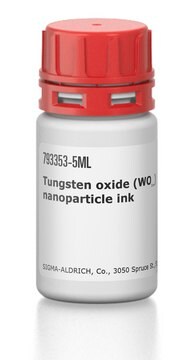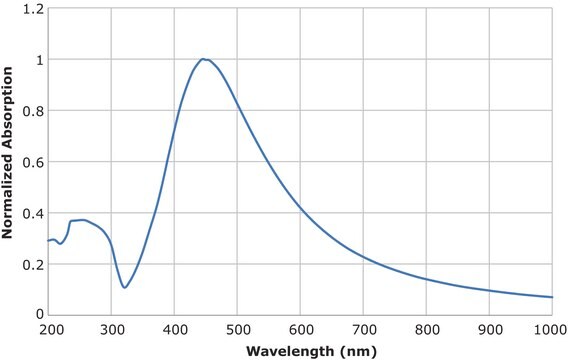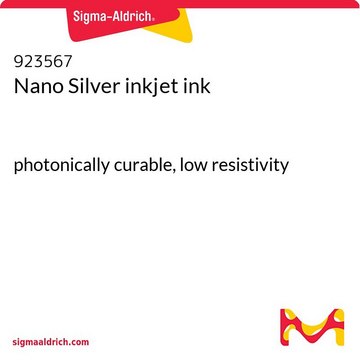901092
Aluminum-doped zinc oxide ink for spin coating/slot-die coating
Synonyme(s) :
AZO dispersion, AZO ink, Al-doped ZnO ink, Helios′Ink H-DZ41006 semiconductive ink
About This Item
Produits recommandés
Description
Conductivity: 10-3-10-4 S/cm
Work function: 3.6 ± 0.1 eV
Niveau de qualité
Forme
liquid (dispersion)
Résistance de la couche
10-20 Ω/sq (in combination with silver nanowires)
Couleur
slightly yellow to clear
Tension de surface
23 mN/m±5 mN/m
Viscosité
<4 mPa.s(20 °C)
Capacité
≥0.9 % loading (Nanoparticles loading)
Description générale
This ink shows great performance on spin coating and slot die coating and is compatible with various flexible substrates (Kapton®, PET, PET/ITO, etc.) but also glass/ITO.
The use of Helios′Ink H-DZ41006 semiconductive ink is greatly improving the devices performances by reducing the roughness of the TCE without a negative impact on the electrical conductivity and the transparency. Life time of the devices is also increased.
The use of Helios′Ink H-DZ41006 provides ETL layer with high performances. In addition, compared to standard ETL, the PCE not retained even with higher thickness.
Caractéristiques et avantages
- Easy deposition under atmospheric conditions (temperature and pressure).
- Good optical performances (visible light transmission >90%).
- Non CMR ink.
- Compatible with ITO layer and Ag NWs layer.
- Compatible with most flexible substrates.
- Low drying temperature making printing onto flexible substrates possible.
Notes préparatoires
Can be homogenized for 5 minutes in an ultrasonic bath in order to get rid of any aggregates.
Drying conditions: Oven, IR oven, vacuum oven.
Clean-up solution: Ethanol/Acetone.
Informations légales
Mention d'avertissement
Danger
Mentions de danger
Conseils de prudence
Classification des risques
Aquatic Chronic 3 - Eye Irrit. 2 - Flam. Liq. 2 - STOT SE 3
Organes cibles
Central nervous system
Code de la classe de stockage
3 - Flammable liquids
Classe de danger pour l'eau (WGK)
WGK 1
Point d'éclair (°F)
58.1 °F
Point d'éclair (°C)
14.5 °C
Faites votre choix parmi les versions les plus récentes :
Déjà en possession de ce produit ?
Retrouvez la documentation relative aux produits que vous avez récemment achetés dans la Bibliothèque de documents.
Articles
Professor Tokito and Professor Takeda share their new materials, device architecture design principles, and performance optimization protocols for printed and solution-processed, low-cost, highly flexible, organic electronic devices.
Notre équipe de scientifiques dispose d'une expérience dans tous les secteurs de la recherche, notamment en sciences de la vie, science des matériaux, synthèse chimique, chromatographie, analyse et dans de nombreux autres domaines..
Contacter notre Service technique